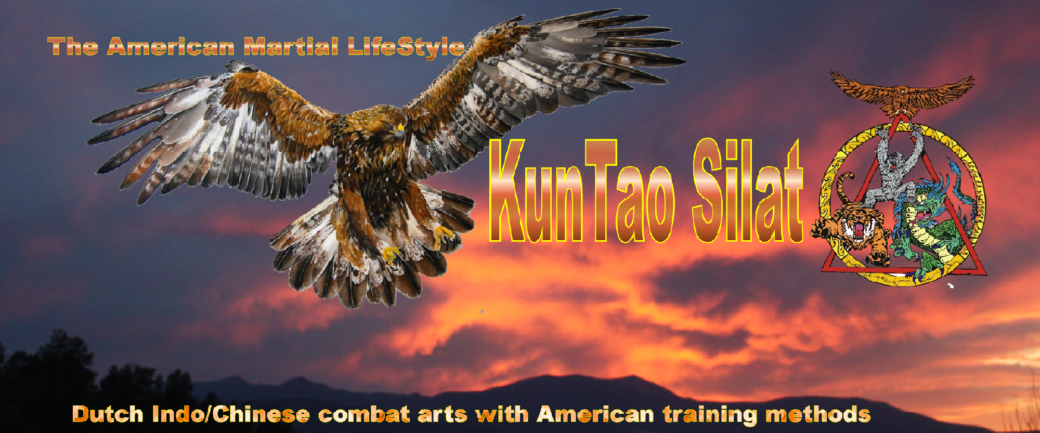Welcome to KunTao Silat ~ the American Martial LifeStyle › Forums › Learning KunTao Silat › Beginning Practitioners › what’s the best way to learn forms?
- This topic has 9 replies, 5 voices, and was last updated 14 years, 1 month ago by
Anonymous.
-
AuthorPosts
-
-
March 6, 2010 at 7:23 pm #467
nelson
ParticipantThis is a new way of training for me,so I'm really looking for some tips from those who have more experience in this field.Is it better to learn the hand movements first then add in the footwwork (or vice versa),or should the hands and feet be integrated from the start?Is it easier to break it down into short segments,or should I aim to get it roughly right from start to finish and go back and polish it once I've learnt it?I've been working on the legwork sets,djurus and triangle exercises for a while now,and have just started to look at Djuru Satu,so any hints or tips to maximise results from limited learning time would be greatly appreciated.
-
March 6, 2010 at 9:14 pm #1019
Anonymous
InactiveHi Nelson,The legwork has traditionally been taught first because it takes the longest to adapt to.
-
March 8, 2010 at 6:29 pm #1020
nelson
ParticipantThanks Guru,Thats exactly the advice I was looking for.I have noticed recently that I've been closing doors with my elbows ,and picking things up off the floor in a strange manner,so I guess I'm on the right track ;Dcheers,Nelson
-
March 8, 2010 at 7:13 pm #1021
Anonymous
InactiveYep, that is the syndrome that identifies a true AKTS infection!
-
March 10, 2010 at 11:17 pm #1022
Tim Nichols
ParticipantUh oh.
-
March 10, 2010 at 11:53 pm #1023
nelson
Participantinfectious too,some of my friends are starting to catch it!
-
March 11, 2010 at 1:42 am #1024
Anonymous
Inactive:'(
-
March 11, 2010 at 7:38 am #1025
Tim Nichols
ParticipantOh, and on a more serious note…Pak Victor always taught forms (djurusan sepak, pantjar 1-4, like that) feet-first, then the handwork.
-
March 30, 2010 at 2:29 am #1026
Travis C
ParticipantIn silat footwork is key! It is no different in our system. We utilize the tricky silat footwork to move, evade, enter, and off balance an aggressor. Sigung says that in AKTS, first you will be taught how to stand! I believe that stances, being the root to all of this, is the most important. Building from the stances comes the moving aspects. Without the ability to move right, the attacks would be useless. In Indonesia the training of the legs for stances and footwork were so important that many teachers would have their student perform tasks such as standing in a horsestance for hours on end pulling grass or picking up rocks. This would go on for years! This was to build the strong foundation for what was to follow. Obviously there was some sort of familiarizing yourself with the propper hand movements and techniques. Now my advice would simply be train what you can anytime you can. For instance, when you are sitting on the couch or riding in a car, you can run through the motions of some handmovements. When you find yourself standing or walking then it is a perfect time for movement and stance training. Repetition is key! Its all about muscle memory. If this is a new way of training for you and you have no background in Indonesian arts of any kind, then it is a good idea to really get the basics set in stone in your brain. In time the forms will come together for you. When you have done that and you are up to the point that you are starting Djurus Satu, first watch the Djuru over and over again. Again remember repetition. I would break it down into segments though and polish as you go.
-
April 6, 2011 at 6:15 pm #1027
Anonymous
InactiveThanks for this post. I really appreciate the great advise given here. I am new to the art, and was wondering myself about what would be the best way to approach it. So for now, I will focus on my legwork.Regards,Randolphankle support
-
-
AuthorPosts
- You must be logged in to reply to this topic.
Share this:
- Click to share on Facebook (Opens in new window) Facebook
- Click to share on X (Opens in new window) X
- Click to share on LinkedIn (Opens in new window) LinkedIn
- Click to email a link to a friend (Opens in new window) Email
- Click to print (Opens in new window) Print
- More
- Click to share on Pinterest (Opens in new window) Pinterest
- Click to share on Reddit (Opens in new window) Reddit
- Click to share on Tumblr (Opens in new window) Tumblr
- Click to share on WhatsApp (Opens in new window) WhatsApp
- Click to share on Pocket (Opens in new window) Pocket
- Click to share on Telegram (Opens in new window) Telegram
